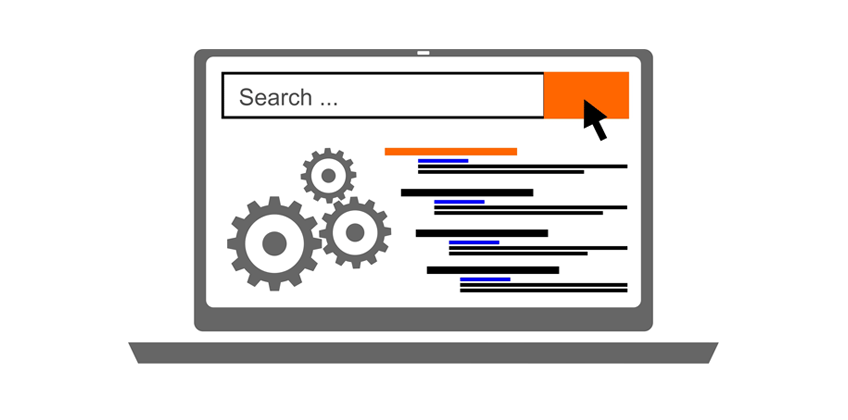
There are numerous factors which influence how the search engine treats and handles your content. Crawl budget is among one of those factors that leave a significant impact. Understanding crawl budget can effectively make you ready to play with certain state-of-the-art techniques ensuring that your website gets crawled successfully – which positions it into a better SERP and enhanced SEO overall.
It may seem a bit technical but it’s not, so no need to panic. It is relatively simple for anyone to learn and gain a serious advantage when it comes to SEO.
Crawling in SEO – Roadmap to Success
Google directs its bots; Googlebot or Google’s Spiders, to crawl over the webpages in order to scan through the website and then index the words and the content within. As soon as crawling is performed, the results are then transferred to Google’s index, making it easier for Google to search and find all your webpages. To make all the URLs easily detectable by Googlebot, it is must to have a sitemap.
Crawling a website is easy for the search engine when it has a limited number of URLs, but when a website has thousands of pages with auto-generated new URLs each day, then it becomes difficult for the search engine to crawl all such pages. Therefore, focusing on what to crawl, when to crawl and how many times to crawl becomes essentially crucial.
Now it becomes relevant to learn about and investigate the concepts of crawl rate and crawl budget.
Understanding the Crawl Budget Phenomenon
The term Crawl budget is a consequence of two important elements – Crawl Rate and Crawl Demand. According to Google’s Gary Illyes, Crawl budget in Google’s view is classified into two parts: crawl rate limit and crawl demand. Reflecting upon the crawl rate and crawl demand of the website, the Crawl budget can be defined as the total number of URLs or webpages that Googlebot can or decides to crawl from the website.
Crawl rate limit is instituted to set limit to the crawling process. It enables Google not to crawl over too many pages at a fast pace from your website, setting the server completely exhausted. Crawl rate limit also restricts Googles to send too many requests that result in decreasing the overall speed of the website.
Crawl rate may increase or decrease depending upon a few factors; one being website speed. When the speed of the website is relatively slow or the response time from the server is low then the crawl rate limit also tends to be low. Googlebot reduces itself to crawl number pages from the website. If the website has a quick response rate, the crawling rate also spikes up.
Crawl rate limit can also be set in the search console – setting the higher limit doesn’t guarantee a higher crawl rate.
Crawl demand depends upon the regular, trending and updated content. If the demand for content of your website is low, then the indexing of webpages will also be on the lower side. Googlebot avoids crawling over pages which are unpopular or lack the freshness and original content.
So, we can conclude that Crawl Budget is defined as the number of webpages or the URLs crawled by the Googlebot depending upon the crawl rate limit and the crawl demand mutually.
After understanding what really a Crawl Budget is, you’d want Google to index your website and to send it’s Googlebot to frequently crawl over your website and URLs for fresh links and content. Clearly, nobody wants to let go of the traffic on the pages which are not crawled by the Googlebot.
How to Optimize Crawl Budget
A number of factors play a significant role in influencing Crawl Budget. Webpages having low value or zero value will incredibly reduce the Crawl Budget. Therefore, it is important to either fix or remove all such pages and URLs or replace it with the content that adds value to the overall website. The most effective way to add value is to come up with original content.
Reproducing the content or coming up with old content can also kill the effectiveness of a website. Regularly updating and coming up with interesting ideas is the key to not only reach your user audience more effectively but also to keep them coming over and over again. Duplicating the Titles or the Meta tag can also ruin the website.
Another important factor is the speed of the website. Nobody wants to experience a slow loading webpage. Therefore, optimizing website speed with respect to different platforms such as desktop or mobile will help avoid performance issues.
Always give preference to your visitors and not the search engine. Stay up-to-date with what the users would want to read on your website rather working for Google and doing unnecessary optimizations.
Crawl Budget’s Impact on SEO
The effects of crawl budget optimization can be seen through server logs along with a software so that you can analyze the data. It is beneficial to determine whether robots are navigating your website correctly or not.
Most certainly, when your website isn’t crawled by Google, nobody will land on your URLs or webpages. Eventually, the website ends up having no traffic at all. Low Crawl Budget is one of the foremost reasons for the low ranking of the webpages. If it continues, then your page will never be able to get ranked in Google.
Careful considerations are required to be taken in order to ensure that the most relevant pages of your website get crawled by Google regularly. High Crawl Budget is also not the tool to get higher ranking on google either. In the end, it all comes to the demand and the quality being offered.
Your website crawl can’t be determined just by enhancing or keeping the crawl budget in some limit. The power behind getting a sufficient crawl budget depends upon the demand of the content, originality, freshness and faster experience on the website.